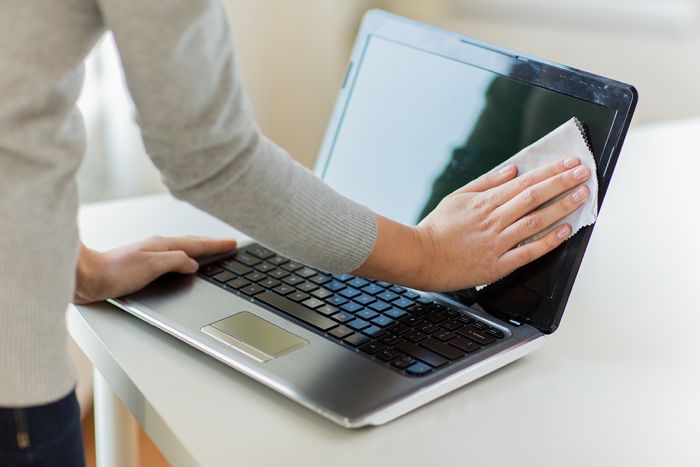How clean is your writing computer?
I don’t know about you, but I use my laptop a LOT.
I have a desktop computer, but I reserve that for my freelance (business) writing. My laptop holds my novels, non-fiction books, blogs, and more, and it goes with me almost everywhere. I take it to restaurants, meetings, on the airplane, and on car trips.
I use my laptop while snacking, drinking, and traveling. And that means one thing—it gets dirty. It collects germs.
Your Writing Computer is Dirty!
Here’s something to gross you out: Scientists collected 300 samples from different computer labs, and every one of them were contaminated with pathogenic bacteria like E. coli, salmonella, and Staphylococcus bacteria. Ew!
In another study by IT-training company CBT Nuggets, researchers compared various surfaces found in a tech office, and found that a computer keyboard contained over 20,000 times more bacteria than a toilet seat!
I’m thinking most writers have a similar relationship with their laptops. Like our phones, they tend to travel with us, and most of the time, we don’t clean them often enough.
How to Clean Your Writing Computer
Do yourself a favor and take a few minutes to clean your writing machine. Here are some basic instructions to help you do it safely, so you won’t damage it.
- Always turn the computer off and unplug it before cleaning.
- Use a 1:1 solution of isopropyl alcohol and distilled water and a soft cloth or sponge to clean the outside case of the laptop. (Never use paper towels, tissues, or scratchy cloths.) Always apply the alcohol to the cloth or sponge first, wring it out so it’s only damp (not wet), then clean.
- Next, using the same cloth and solution, clean the top of the keyboard and trackpad and buttons.
- Now, using circular motions, use the same materials to clean the screen. Once it’s clean, dry it with a separate, soft dry cloth.
- Finally, use a can of compressed air to clean the nooks and crannies in the keyboard, including the ports and cooling vents.
- Make sure the computer is completely dry before turning it on.
Enjoy a fresh, clean keyboard for your writing projects!
Sources
Malik, K, and Naeem, N, “Study of bacteria on computer’s mice and keyboards,” Int J Curr Microbiol App Sci., 2014; 3(4):813-823, https://www.ijcmas.com/vol-3-4/Kausar%20Malik%20and%20Nabiha%20Naeem.pdf.
Team Nuggets, “Bytes and Bacteria: Exposing the Germs on your Technology,” CBT Nuggets, October 13, 2016, https://www.cbtnuggets.com/blog/2016/10/bytes-and-bacteria-exposing-the-germs-on-your-technology/.

